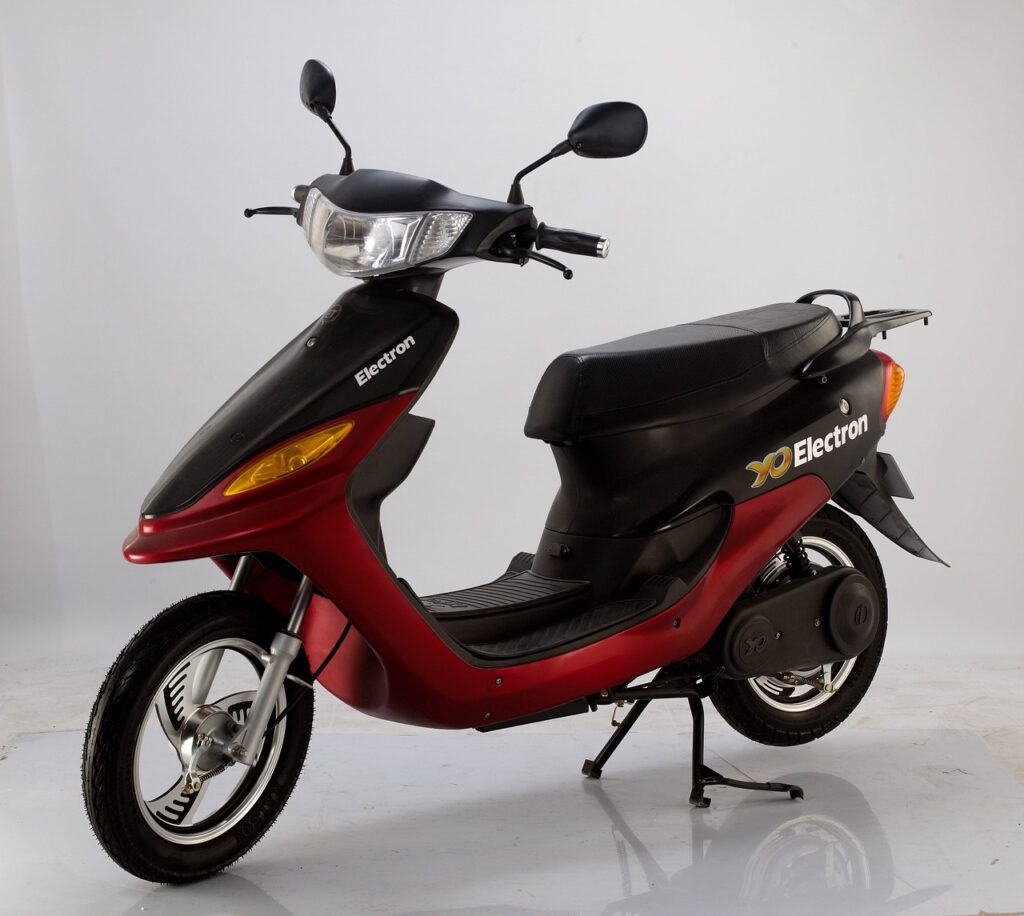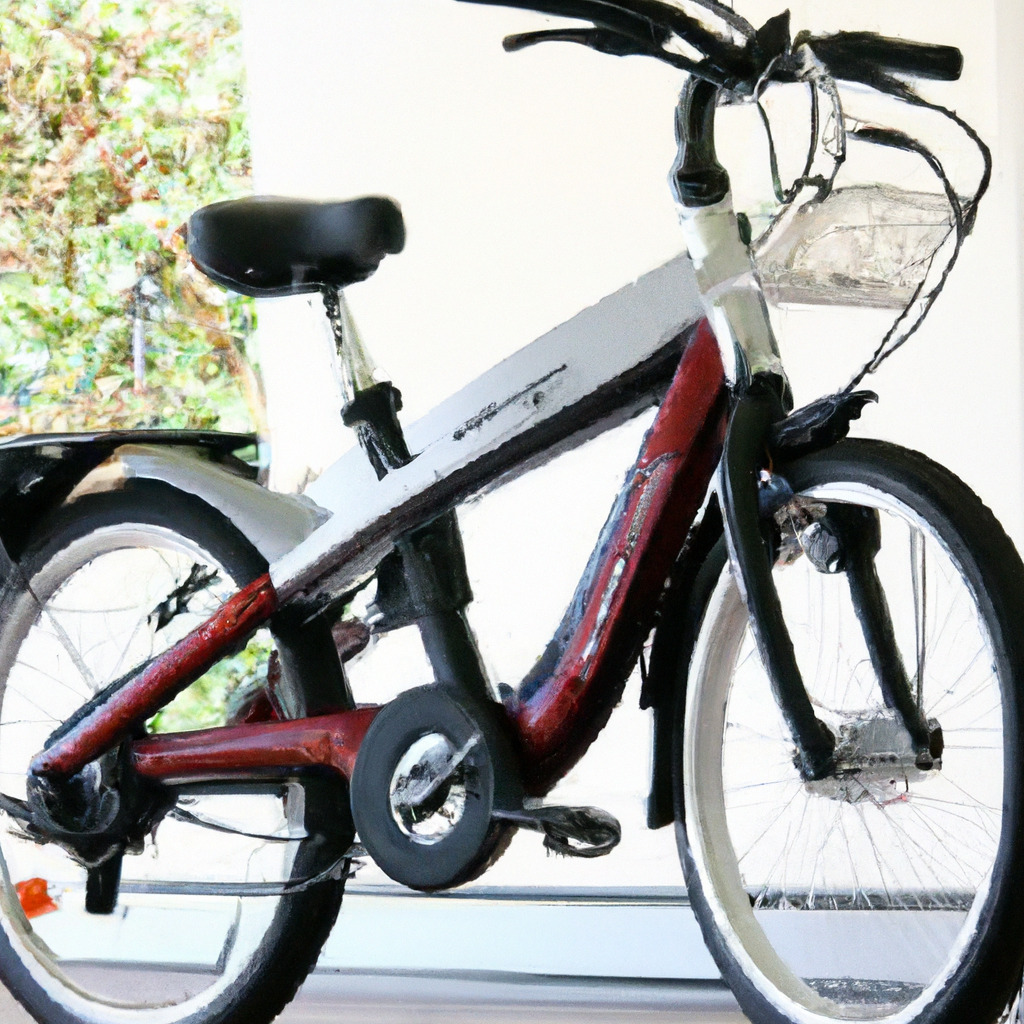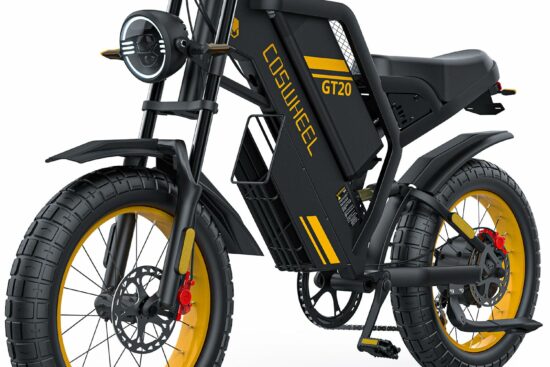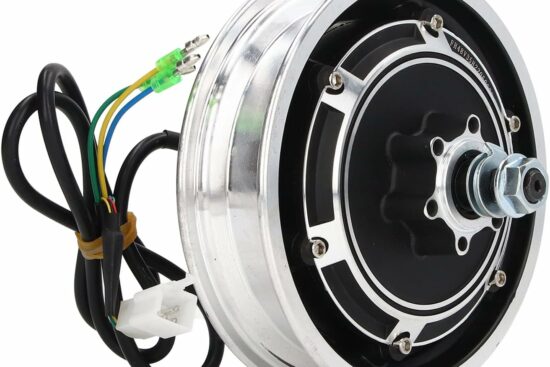
Electric bikes, also known as e-bikes, have gained significant popularity in recent years as a mode of green transportation. This article explores the potential of electric bikes to revolutionize the way people commute, while also reducing carbon emissions and promoting a healthier lifestyle. By examining their benefits, technological advancements, and global adoption, we will delve into the question of whether electric bikes truly hold the key to a sustainable transportation future.
Advantages of Electric Bikes
Reduced carbon emissions
Electric bikes have gained popularity in recent years due to their environmentally friendly nature. Compared to traditional gasoline-powered vehicles, electric bikes produce significantly lower carbon emissions. This reduction in carbon emissions makes them a greener transportation option and contributes to the efforts in combating climate change. By choosing an electric bike as your mode of transportation, you can significantly reduce your carbon footprint and contribute to a cleaner and healthier environment.
Cost-effective transportation
One of the major advantages of electric bikes is their cost-effectiveness. Electric bikes have a low operational cost as they require less maintenance compared to traditional vehicles, which are dependent on expensive gasoline. Additionally, the cost of charging an electric bike is substantially lower than refueling a conventional vehicle. This makes electric bikes an economical choice for daily commuting, as they can save you money in the long run, especially in terms of fuel expenses.
Improved air quality
Another significant advantage of electric bikes is their ability to improve air quality. Traditional vehicles emit harmful gases such as carbon monoxide, nitrogen oxides, and particulate matter, which contribute to air pollution and pose health risks. In contrast, electric bikes produce zero tailpipe emissions, leading to cleaner air and a healthier living environment. By riding an electric bike instead of driving a gasoline-powered vehicle, you can contribute to improving air quality and reducing the negative impacts of pollution on human health.
Health benefits
Electric bikes provide not only environmental benefits but also numerous health advantages. Despite their electric assistance, riding an electric bike still requires physical exertion, especially when pedaling without motor assistance. Regular physical exercise can enhance cardiovascular health, improve muscle strength, and maintain overall fitness. Electric bikes offer a more accessible opportunity for individuals of varying fitness levels to engage in physical activity and incorporate exercise into their daily routines.
Increased accessibility
Electric bikes have opened up new possibilities for transportation by increasing accessibility. These bikes offer an alternative mode of commuting for individuals who may have physical limitations or health issues that prevent them from using traditional bicycles or other forms of transportation. With the assistance of electric power, individuals who may struggle with steep inclines or long distances can now travel conveniently and comfortably. Furthermore, electric bikes provide a solution for commuters who cannot afford a car or do not have access to public transportation, offering them a cost-effective and flexible transportation option.
Technological Advancements in Electric Bikes
Battery technology
One of the key technological advancements in electric bikes is the improvement in battery technology. Newer electric bikes are equipped with more efficient and advanced lithium-ion batteries, which offer longer distances and faster charging times. These batteries have a higher energy density, allowing electric bikes to have a longer range and reducing the need for frequent charging. As battery technology continues to progress, electric bikes are becoming more reliable and capable of meeting the demands of daily commuting.
Motor efficiency
The efficiency of electric bike motors has also seen significant advancements. Electric bike motors now have higher power outputs and better torque capabilities, providing a smoother riding experience. These motors are designed to optimize energy consumption and reduce power loss, resulting in improved overall performance. With more efficient motors, electric bikes can travel at higher speeds and maintain consistent power output, making them a viable alternative for longer-distance travel.
Smart features
Electric bikes are increasingly incorporating smart features that enhance the overall riding experience. These smart features include built-in GPS navigation systems, activity trackers, and LED displays that provide real-time information such as speed, battery level, and distance traveled. Some electric bikes even have integrated smartphone apps that allow riders to customize their riding preferences, track their fitness goals, and receive notifications. These smart features not only make electric bikes more user-friendly but also add convenience and safety to the daily commuting experience.
Integration with smartphones
The integration of electric bikes with smartphones has become a popular trend in recent years. Many electric bike manufacturers now offer companion smartphone apps that enable riders to control and monitor their bikes remotely. Riders can adjust various settings, such as pedal assist levels and motor power, directly from their smartphones. Some apps even provide GPS navigation, allowing riders to plan their routes, track their location, and receive turn-by-turn directions. This seamless integration between electric bikes and smartphones further enhances the user experience and provides riders with a higher level of control and convenience.
Wireless charging
Wireless charging technology is another exciting development in the electric bike industry. With wireless charging, riders can simply place their electric bike on a charging pad, eliminating the need for cables and connectors. This technology allows for a more convenient and hassle-free charging experience, making electric bikes even more user-friendly and accessible. As wireless charging technology continues to advance, it is expected to become a standard feature in the electric bike industry, further simplifying the charging process for riders.

Current Trends in Electric Bike Adoption
Rise in sales
Electric bikes have experienced a significant rise in sales in recent years. The demand for electric bikes has been fueled by their numerous advantages, including their environmental benefits, cost-effectiveness, and health benefits. As people become more aware of these advantages and seek sustainable transportation options, the popularity of electric bikes continues to grow. Manufacturers have also responded to this increasing demand by offering a wider range of electric bike models to suit different needs and preferences.
Growing popularity in urban areas
Electric bikes are particularly popular in urban areas, where they offer a practical solution to the challenges of congested traffic and limited parking spaces. In densely populated cities, electric bikes provide an efficient and flexible transportation mode that can navigate through congested roads and reach destinations quickly. Their compact size and maneuverability make them ideal for navigating busy city streets and avoiding traffic jams. Electric bikes also offer the advantage of being able to access bike lanes and paths, which are increasingly being developed in urban areas to promote sustainable transportation options.
Electric bike sharing programs
Electric bike sharing programs have emerged as a popular trend in many cities worldwide. These programs allow users to rent electric bikes for short periods of time, typically on an hourly or daily basis. Electric bike sharing programs provide a convenient and accessible transportation option for individuals who do not own their own electric bikes. These programs are often integrated with smartphone apps, allowing users to locate and unlock bikes using their mobile devices. Electric bike sharing programs promote the use of electric bikes as a sustainable and convenient transportation alternative, supporting the broader shift towards green transportation systems.
Government incentives
Governments around the world are increasingly recognizing the potential of electric bikes as a means of sustainable transportation. Many governments are offering incentives and subsidies to encourage the adoption of electric bikes. These incentives may include financial incentives, tax breaks, or rebates for the purchase of electric bikes. Governments are also investing in the development of infrastructure to support electric bikes, such as bike lanes, charging stations, and secure parking facilities. These government initiatives aim to incentivize the use of electric bikes and create a supportive environment for their widespread adoption.
Integration with transportation systems
Electric bikes are being integrated into existing transportation systems in many cities. Public transit agencies are recognizing the benefits of electric bikes as a first-and-last-mile solution, connecting commuters to transit hubs and improving overall accessibility. Some cities have implemented bike-sharing programs that integrate with public buses and trains, allowing users to easily transition between modes of transportation. By integrating electric bikes into public transportation systems, cities can promote more sustainable transportation options and provide a more seamless and efficient commuting experience for residents.
Challenges Facing Electric Bikes
Limited battery range
One of the main challenges facing electric bikes is the limited battery range. Electric bikes typically have a range of around 20-50 miles per charge, depending on factors such as terrain, weight, and assist level. This limited range can be a deterrent for individuals who require longer distances or need to commute over hilly terrain. To address this challenge, ongoing research and development are focused on improving battery technology to increase the range of electric bikes. Additionally, the development of charging infrastructure and battery swap stations can help alleviate concerns related to limited range.
Lack of charging infrastructure
The lack of widespread charging infrastructure is another challenge for electric bikes. While electric cars have gained more attention and infrastructure development, charging stations for electric bikes are still relatively limited. The availability of charging stations can influence the decision to invest in an electric bike, as riders need to have convenient access to charging facilities to ensure a reliable and practical commuting experience. As the demand for electric bikes continues to increase, it is crucial for cities and businesses to invest in the development of a comprehensive charging infrastructure to support the widespread adoption of electric bikes.
Safety concerns
As with any mode of transportation, safety concerns exist for electric bikes. These concerns include traffic accidents, collisions with pedestrians, and issues related to rider visibility. Electric bikes can reach higher speeds compared to traditional bikes, which may require additional safety measures and awareness from riders. Safety education and awareness campaigns can help address these concerns and promote responsible riding practices. The implementation of dedicated bike lanes and the enforcement of traffic regulations specific to electric bikes can also contribute to improving safety for riders and other road users.
Resistance from traditional transportation industries
The growth of electric bikes has faced some resistance from traditional transportation industries. Traditional automotive and public transportation sectors may view electric bikes as a threat to their market dominance. The shift towards electric bikes poses challenges to existing business models and infrastructure development. However, as electric bikes continue to gain popularity and prove their benefits, traditional transportation industries are gradually recognizing them as an integral part of the future of transportation. Collaborations and partnerships between electric bike manufacturers and traditional transportation sectors can help facilitate a smooth transition and promote the integration of electric bikes into existing transportation systems.
Affordability
Affordability is another challenge that needs to be addressed for wider electric bike adoption. While the cost of electric bikes has decreased over time, they are still relatively more expensive than traditional bicycles. The upfront cost of purchasing an electric bike can be prohibitive for some individuals, particularly those on a tight budget. However, it is important to consider the long-term cost savings and benefits of electric bikes in terms of reduced fuel consumption and maintenance. Efforts to reduce the cost of electric bike production and increase their availability at various price points will play a crucial role in making them more accessible and affordable to a broader range of individuals.

Environmental Impact of Electric Bikes
Reduced greenhouse gas emissions
One of the most significant environmental impacts of electric bikes is the reduction of greenhouse gas emissions. Electric bikes produce zero tailpipe emissions, unlike gasoline-powered vehicles that release carbon dioxide and other greenhouse gases during operation. By choosing an electric bike over a traditional vehicle, individuals can contribute to mitigating climate change and reducing their ecological footprint. This reduction in greenhouse gas emissions helps to preserve the environment and protect future generations from the adverse effects of global warming.
Decreased noise pollution
Electric bikes also contribute to decreased noise pollution in urban areas. Unlike traditional vehicles with internal combustion engines, electric bikes operate quietly. The absence of engine noise makes electric bikes an ideal transportation option for noise-sensitive environments such as residential areas and parks. By reducing noise pollution, electric bikes contribute to creating a more peaceful and enjoyable living environment for residents and visitors alike.
Conservation of natural resources
The use of electric bikes promotes the conservation of natural resources. Electric bikes do not rely on fossil fuels such as gasoline or diesel, which are finite resources. By utilizing electricity as the primary source of energy, electric bikes tap into a renewable resource that can be generated using various sustainable methods, including solar and wind power. This reliance on renewable energy sources ensures the long-term availability of energy for transportation purposes and minimizes the depletion of natural resources.
Promotion of sustainable cities
Electric bikes play a vital role in promoting the development of sustainable cities. The adoption of electric bikes as a mode of transportation contributes to the overall reduction of greenhouse gas emissions, air pollution, and congestion in urban areas. This reduction has a direct positive impact on the quality of life for city residents, promoting a healthier and cleaner living environment. Electric bikes also contribute to the creation of more livable cities by reducing the need for parking spaces and offering a space-efficient alternative to traditional vehicles.
Mitigation of climate change effects
The use of electric bikes can help mitigate the effects of climate change. Electric bikes provide an opportunity for individuals to reduce their carbon footprint and make sustainable choices in their daily lives. By reducing greenhouse gas emissions and air pollution, electric bikes contribute to slowing down the rate of climate change and its associated impacts, such as extreme weather events and rising sea levels. The widespread adoption of electric bikes can supplement other efforts to mitigate climate change and create a more sustainable future for all.
Electric Bikes vs. Traditional Bikes
Assistance in pedaling
One significant advantage of electric bikes over traditional bikes is the assistance they provide in pedaling. Electric bikes are equipped with a motor that provides extra power when pedaling, making it easier to overcome challenging terrain or ride for longer distances. This assistance allows riders to travel at higher speeds and comfortably navigate hilly areas without exerting excessive physical effort. Traditional bikes, on the other hand, rely solely on the rider’s pedaling power, which can be demanding for individuals with physical limitations or those who prefer a less strenuous riding experience.
Higher speeds
Electric bikes offer higher speeds compared to traditional bikes. With the assistance of the electric motor, riders can reach higher speeds with less effort. This increased speed allows electric bike riders to cover larger distances in a shorter amount of time, making them a more efficient mode of transportation, especially for commuting or running errands. Traditional bikes rely solely on the rider’s physical strength and endurance, which may limit the attainable speed. Electric bikes provide a faster and more convenient means of transportation, particularly for individuals with time constraints or those looking to complete their journeys more quickly.
Longer distances
Another advantage of electric bikes is their ability to cover longer distances. Traditional bikes require riders to rely solely on their physical stamina, which may limit the distance that can be comfortably covered. Electric bikes, however, provide assistance in pedaling, enabling riders to travel longer distances without becoming fatigued. This extended range makes electric bikes suitable for commuting or leisure rides of greater lengths, allowing riders to explore new areas and enjoy longer journeys compared to traditional bikes.
Less physical exertion
Electric bikes offer a reduced level of physical exertion compared to traditional bikes. The electric motor provides assistance in pedaling, reducing the effort required from riders. This is particularly beneficial for individuals who may have physical limitations, such as joint pain or limited mobility. Electric bikes enable riders to engage in physical activity while minimizing the strain on their bodies, making them a more inclusive and accessible mode of transportation. Traditional bikes, on the other hand, require riders to exert their own physical strength, which may be challenging for some individuals or discourage them from cycling altogether.
Route flexibility
Electric bikes offer greater route flexibility compared to traditional bikes. With an electric bike, riders have the option to choose between pedal-assist mode or fully electric mode, depending on their preferences and needs. This flexibility allows riders to adapt to various terrains and conditions, such as steep inclines or headwinds, without the concern of physical exhaustion. Traditional bikes require riders to rely solely on their physical capabilities, limiting the range of routes that can be comfortably taken. Electric bikes provide the flexibility to navigate through challenging terrain and choose routes that suit individual preferences or specific commuting requirements.

Integration of Electric Bikes in Public Transportation
Bike lanes and infrastructure
To facilitate the integration of electric bikes in public transportation, the development of dedicated bike lanes and infrastructure is essential. Bike lanes provide a safe and accessible space for riders to commute and connect to public transit hubs. Designated bike lanes also increase the visibility and presence of electric bikes, promoting their acceptance and recognition as a legitimate transportation mode. Governments and urban planning authorities need to prioritize the development and maintenance of bike lanes to ensure the safe and efficient integration of electric bikes into public transportation systems.
Bike parking facilities
The integration of electric bikes in public transportation requires the provision of adequate bike parking facilities. These facilities should be secure, easily accessible, and conveniently located near public transit hubs, encouraging riders to combine their electric bike commute with other modes of transportation. Bike parking facilities can include bike racks, lockers, or even specialized parking areas for electric bikes with charging capabilities. By providing safe and well-designed bike parking facilities, cities can encourage more individuals to adopt electric bikes as a viable and convenient transportation option.
Electric bike charging stations
The availability of electric bike charging stations is crucial for the successful integration of electric bikes in public transportation. These charging stations should ideally be located near public transit hubs or other major destinations to support the charging needs of electric bike users. Public charging stations can use renewable energy sources, aligning with the sustainability goals of the electric bike industry and further reducing the environmental impact of transportation. The installation of electric bike charging stations in key locations will provide riders with the necessary infrastructure to confidently and conveniently use their electric bikes in combination with public transportation.
Collaborations with public transit systems
Collaborations between electric bike manufacturers and public transit systems can greatly enhance the integration of electric bikes into existing transportation networks. Public transit agencies can offer incentives or discounts for passengers who combine their public transit journeys with an electric bike ride. Integration with transit payment systems can streamline the process of transferring between electric bikes and other modes of transportation. By fostering collaborations and partnerships, electric bike adoption can be promoted as a complementary mode of transportation, allowing for seamless and efficient multi-modal journeys.
Shared mobility platforms
Shared mobility platforms, which include bike-sharing programs, can play a significant role in the integration of electric bikes in public transportation. Publicly accessible electric bikes can be strategically located near public transit hubs, providing first-and-last-mile connectivity and encouraging individuals to opt for electric bikes as a convenient extension of their public transit journeys. These shared electric bikes can be easily rented and utilized for shorter periods, allowing users to ride between transit points without the need for personal ownership. Shared mobility platforms can bridge the gap between public transit systems and electric bikes, promoting a seamless and efficient transportation network.
Effects of Electric Bike Adoption on Cities
Reduced traffic congestion
The widespread adoption of electric bikes can help reduce traffic congestion in cities. By choosing electric bikes for daily commuting or short trips, individuals can reduce the number of traditional vehicles on the road, particularly during peak hours. The compact size and maneuverability of electric bikes allow them to navigate through congested traffic more easily, providing a faster and more efficient means of transportation. The reduction in traffic congestion improves overall traffic flow, reduces travel times, and enhances the quality of life for residents by minimizing the frustration and stress associated with congested roads.
Improved public health
Electric bike adoption contributes to improved public health in cities. The increased use of electric bikes encourages individuals to engage in regular physical activity, leading to better cardiovascular health and fitness levels. The reduction in air pollution resulting from the use of electric bikes also has a positive impact on public health, as cleaner air reduces the risk of respiratory illnesses and other health conditions associated with poor air quality. The promotion of active transportation, such as electric biking, can help combat sedentary lifestyles and the associated health issues, leading to healthier and more vibrant communities.
Promotion of active lifestyle
Electric bikes promote an active lifestyle by encouraging individuals to incorporate physical activity into their daily routines. Unlike traditional vehicles, electric bikes require riders to pedal, providing a moderate level of exercise while still offering assistance for longer distances or challenging terrain. The physical activity associated with electric bike riding can help combat sedentary lifestyles and contribute to weight management, improved cardiovascular fitness, and overall well-being. The active lifestyle promoted by electric bikes has ripple effects beyond individual health, positively impacting the culture and vibrancy of cities as more people choose to embrace an active and sustainable mode of transportation.
Economic benefits
The adoption of electric bikes offers numerous economic benefits for cities. The reduced reliance on gasoline and traditional vehicles means lower fuel consumption and associated costs. This reduction in fuel expenses translates to savings for individuals and a decrease in the overall demand for fossil fuels. Electric bikes also have lower maintenance costs compared to traditional vehicles, as they have fewer complex components and require less frequent service. Additionally, the growth of the electric bike industry creates job opportunities, ranging from manufacturing and sales to maintenance and infrastructure development. The economic benefits resulting from electric bike adoption contribute to the long-term sustainability and prosperity of cities.
Revitalization of urban spaces
The integration of electric bikes in cities can contribute to the revitalization of urban spaces. By reducing the dominance of traditional vehicles and creating a more bike-friendly environment, cities can reclaim road space for pedestrian-friendly areas, public parks, and cultural venues. The presence of electric bikes also adds vibrancy to urban spaces, as riders are more likely to explore and frequent local businesses, restaurants, and shops. The revitalization of urban spaces creates a sense of community, encourages sustainable urban development, and enhances the overall quality of life for residents and visitors.

Innovation and Future Developments in Electric Bikes
Longer battery life
Ongoing innovation in electric bike battery technology aims to improve the battery life and overall performance of electric bikes. Longer battery life allows riders to travel greater distances without the need for frequent recharging. Research and development efforts focus on enhancing battery capacity, optimizing energy efficiency, and reducing charging times. As battery technology continues to advance, electric bikes will become more reliable and capable of meeting the demands of longer commutes and extended recreational rides.
Faster charging technology
Advancements in charging technology are also being made to further enhance the convenience of electric bike ownership. Faster charging technology reduces the time required to fully charge electric bike batteries, reducing waiting times and enhancing the overall usability of electric bikes. Rapid charging stations utilizing high-power chargers are being developed to provide quick and efficient charging options for electric bike users. This faster charging technology will enable riders to quickly recharge their electric bikes, providing maximum flexibility and convenience for daily commuting and other transportation needs.
Lightweight materials
The use of lightweight materials in electric bike construction is an area of focus for future developments. Lighter frames, components, and batteries contribute to increased energy efficiency and improved handling. Lightweight electric bikes are easier to maneuver and require less physical effort to navigate. The use of lightweight materials also contributes to the overall reduction of electric bike weight, making them more portable and easier to handle, store, and transport. The ongoing research and development of advanced materials will continually enhance the performance and user experience of electric bikes.
Improved designs
The evolution of electric bike designs is an ongoing process aimed at improving aesthetics, functionality, and user comfort. Manufacturers are focusing on developing sleek and streamlined designs that seamlessly integrate the electric components while maintaining the iconic features of traditional bicycles. Ergonomic advancements, such as adjustable handlebars and saddle positions, are also being incorporated into electric bikes to provide riders with a personalized and comfortable riding experience. Improved designs in electric bikes will continue to attract more individuals to adopt this sustainable mode of transportation.
Integration with renewable energy sources
The future of electric bikes includes greater integration with renewable energy sources. Solar charging ports and energy capture technologies enable electric bike batteries to be charged using clean energy derived from the sun. This integration not only supports the sustainability goals of electric bike adoption but also reduces reliance on traditional electricity grids. By using renewable energy to power electric bikes, riders can further reduce their carbon footprint and contribute to a more sustainable and greener transportation system.
Conclusion
Electric bikes have emerged as a viable solution to address the environmental, economic, and health challenges associated with traditional modes of transportation. The numerous advantages they offer, such as reduced carbon emissions, cost-effectiveness, improved air quality, and increased accessibility, have propelled their popularity. Technological advancements in battery technology, motor efficiency, smart features, and integration with smartphones and renewable energy sources have further enhanced the appeal and performance of electric bikes. While challenges related to limited battery range, lack of charging infrastructure, safety concerns, affordability, and resistance from traditional transportation industries remain, the future of electric bikes looks promising. The environmental impact of electric bikes, the benefits they provide in comparison to traditional bikes, and their potential integration with public transportation systems all contribute to their growing significance in creating sustainable cities. Continued innovation and future developments in longer battery life, faster charging technology, lightweight materials, improved designs, and integration with renewable energy sources will further enhance the electric bike industry. With widespread adoption and support from governments, businesses, and individuals, electric bikes have the potential to revolutionize transportation and pave the way towards a greener and more sustainable future.
Are Electric Bikes The Future Of Green Transportation? Absolutely. With their numerous advantages, ongoing technological advancements, and potential for integration into public transportation systems, electric bikes offer a promising solution for sustainable and efficient urban mobility. By choosing electric bikes, individuals can contribute to reduced carbon emissions, improved air quality, and enhanced public health. The adoption of electric bikes presents economic benefits, creates vibrant urban spaces, and supports the preservation of the environment. As electric bikes continue to evolve and gain acceptance, they have the potential to transform cities, promote active lifestyles, and shape a greener transportation future for all.





















